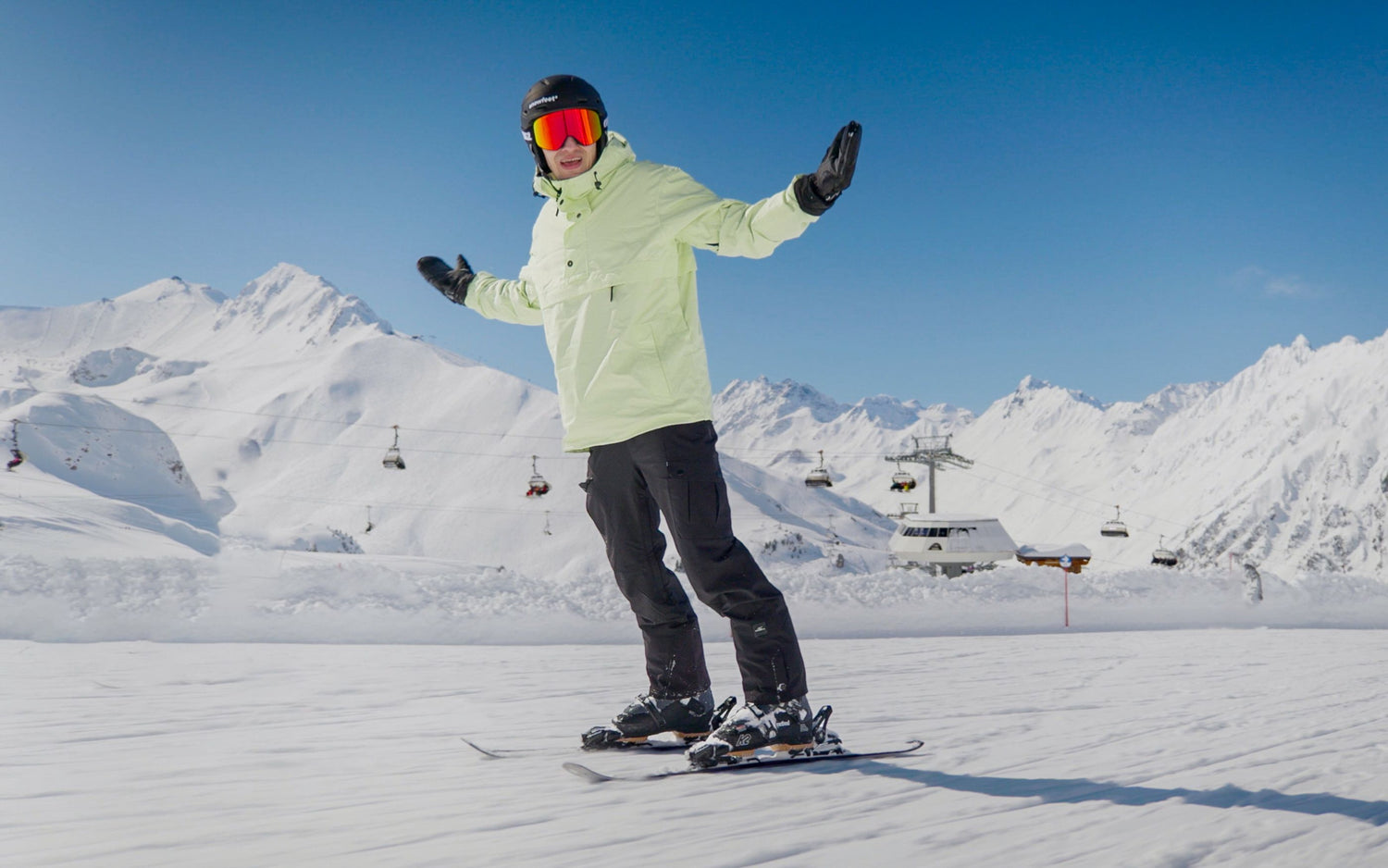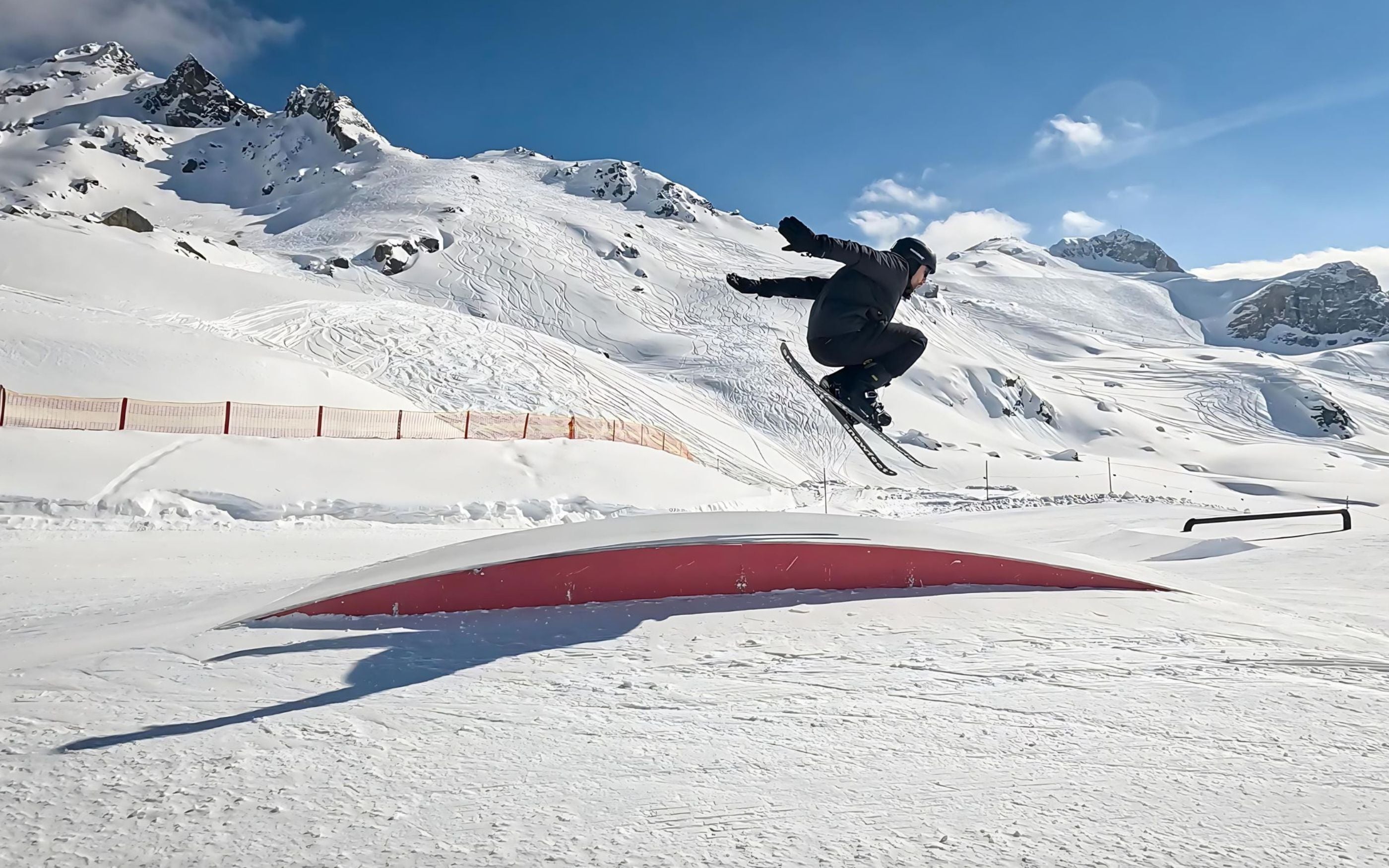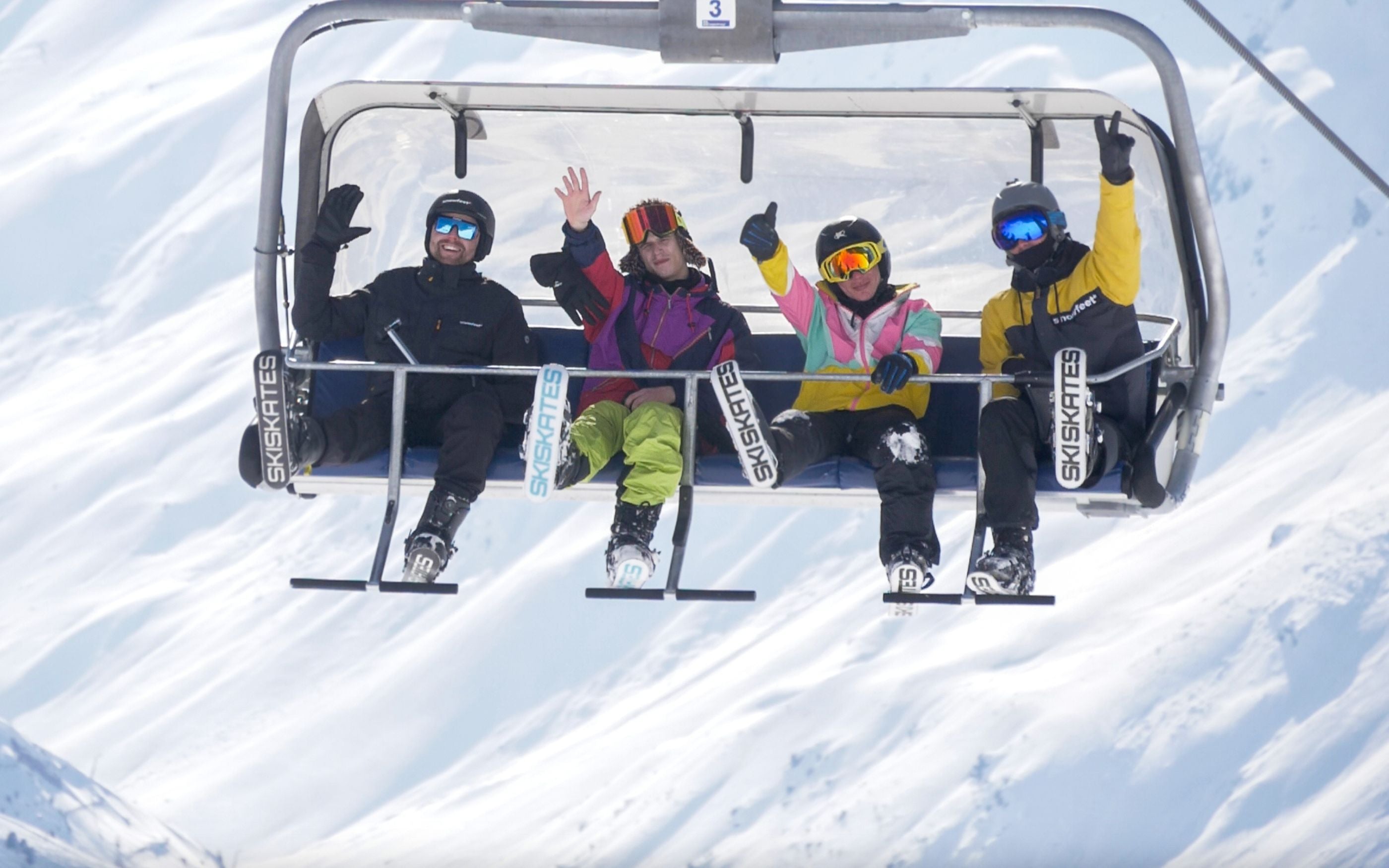Choosing skiblades length is easy: just go with what feels the best. But when it comes to bindings, many skiers re not sure which type is the right for them. Let's see what are your options, and take a closer look at release ski bindings.
Snowblades provide three binding options: release ski bindings, non-release ski bindings and snowboard bindings. Each one of them brings benefits to skiers when chosen with respect to your style and skiblades.
Release Ski Bindings
Release bindings are often seen as the pinnacle of ski safety. You probably know them from the regular long skis. These bindings are engineered to detach your boot from the snowblade if there’s excessive force, such as during a fall or abrupt stop. This feature significantly reduces the risk of injury, particularly to your knees or ankles, making them the go-to for longer skiblades or high-speed skiers. However, do not think other types of bindings to be less safe: in case of a harsh fall, they will release as well.
For snowblades over 99 cm, release bindings are the most recommended option. Simply because at lengths above 99 cm falls when you leg could get twisted or stuck somewhere are more common. They offer the balance of safety and performance necessary for faster, more aggressive skiing. So when you are all about speeding down like a maniac, take release ski bindings as your best solution.
Non-Release Ski Bindings
Non-release bindings provide a simpler, fixed option. Unlike their release counterparts, these bindings won’t release your boot in the event of a fall. In case this scares you a bit, imagine a fall with ski just a tad longer than your boots, and skis that are almost as high as you are. When you fall with short skis, you are not too much likely to stuck your ski somewhere or to twisted your leg terribly, simply because the short skis will adjust more to the fall.
These bindings are typically found on snowblades measuring between 65 cm and 99 cm. Release bindings are quite long and they do not fit on short skiblades. Non-release bindings are easy to adjust at home, plus they are more affordable than release pro bindings which makes the short skis with release bindings cheaper.
Snowboard Bindings
Some snowblades come with snowboard boots bindings, which are strap-based and similar to those used on actual snowboards. These bindings are especially popular on shorter snowblades, typically in the 65 cm to 99 cm range. They are designed specifically for short skis, so they fit perfectly and they allow you to use any snowboard boots.
Snowboard bindings are also a great choice for riders who dislike clunky ski boots or have larger calves, as these bindings allow for more flexibility. Plus, they’re easy to step into, making them a convenient option for skiers who like a hassle-free experience on the slopes. Snowboard bindings are easy to adjust, so you don't need to worry about going to a ski shop for them to fit you perfectly.
Why Short Snowblades Can’t Have Release Bindings
If you’re wondering why short snowblades (typically around 65 cm or less) don’t feature release bindings, the answer lies in their design. Short snowblades are compact, leaving little room for the bulkier mechanism required by release bindings. More importantly, shorter blades are easier to control and don’t generate the same forces as longer skis, so a release system is less necessary.
This is why short snowblades are commonly paired with non-release bindings or snowboard bindings. Their lightweight and maneuverable nature means that even in the event of a fall, the consequences are typically less severe. Shorter skiblades are designed for playfulness, quick turns, and slow to moderate speeds, where the risks are minimized, and safety is still maintained.
Why Release Bindings Are a Must for Longer Snowblades
Once you move into the realm of longer snowblades—those measuring over 99 cm—release bindings become essential for both safety and performance. Here’s why:
1. Improved Stability at High Speeds
Longer skiblades will usually lead you to faster ride. At these faster paces, having a solid, secure binding is crucial. Release bindings ensure that your boots stay tightly attached, providing the stability and control needed to handle more aggressive skiing styles. But this does not mean than other types of bindings will not give you enough support.
2. Injury Prevention During Falls
Release bindings offer a critical advantage when it comes to safety. In the event of a crash or impact, these bindings release your boots to prevent injury. This is especially important with longer snowblades, where the forces at play during a fall are much higher than on shorter models. By releasing the boots, these bindings can help protect your legs, knees, and ankles from strain or fractures.
3. Versatility Across Different Terrain
Longer snowblades are often used for all-mountain skiing, meaning you’ll tackle a range of terrains—from smooth groomed runs to powder and moguls. Release bindings are adaptable to all these conditions, giving you the flexibility and control to ski confidently, no matter the terrain. Feel free to take them to the park, as well as off-piste.
Benefits of Using Release Ski Bindings
If you’re still on the fence about whether release bindings are the right choice, here are some key advantages to consider:
Superior Safety
The primary reason skiers choose release bindings is for their safety. These bindings are designed to release in the event of a fall, minimizing the risk of injury. For longer snowblades, this safety feature becomes especially important as speeds and forces increase.
Enhanced Performance in High Speeds
Release bindings provide a more secure fit, offering greater control at higher speeds. This improved performance can help you feel more confident as you tackle steep slopes or rough terrain, making them an excellent option for intermediate to advanced skiers.
Examples of Snowfeet Skiblades with Release Bindings
Looking for the perfect snowblades with release bindings? Snowfeet offers some excellent models that combine fun, performance, and safety. Here are two of their standout options:
Snowfeet Skiblades 99 with Release Bindings
The Snowfeet Skiblades 99 are an ideal choice for skiers who crave speed and freedom. Measuring 99 cm, they strike a perfect balance between agility and stability. These skiblades come equipped with release bindings, ensuring that you’re protected in the event of a fall, while also offering the stability needed for high-speed turns and varied terrain.
These skiblades are fantastic for all-mountain skiing, allowing you to confidently explore groomed runs, moguls, and powder alike. If you are into tricks and jumps, these are probably the longer skiblades that can absolutely rock on the boxes. The release bindings add an extra layer of safety, making them perfect for intermediate or advanced skiers looking to push their limits.
Snowfeet Skiblades 120 with Release Bindings
For those who want even more stability, the Snowfeet Skiblades 120 are a top-notch option. At 120 cm, these skiblades offer additional length for greater control at higher speeds, making them ideal for more advanced riders. The release bindings on these skiblades ensure maximum safety, even when navigating tricky or technical terrain.
If you want to try short skis but you are not entirely convinced, these skiblades will be the right choice.
Conclusion
When it comes to choosing the right bindings for your snowblades, understanding the difference between release, non-release, and snowboard bindings is key. While short snowblades can comfortably use non-release or snowboard bindings, longer models (over 99 cm) benefit from the added safety and performance offered by release bindings.
If you’re looking for a reliable, versatile snowblade that combines fun with safety, Snowfeet’s Skiblades 99 and 120 are excellent options to consider. Equipped with release bindings, these models offer the control, stability, and protection you need to confidently tackle the slopes.
















Leave a comment
This site is protected by hCaptcha and the hCaptcha Privacy Policy and Terms of Service apply.